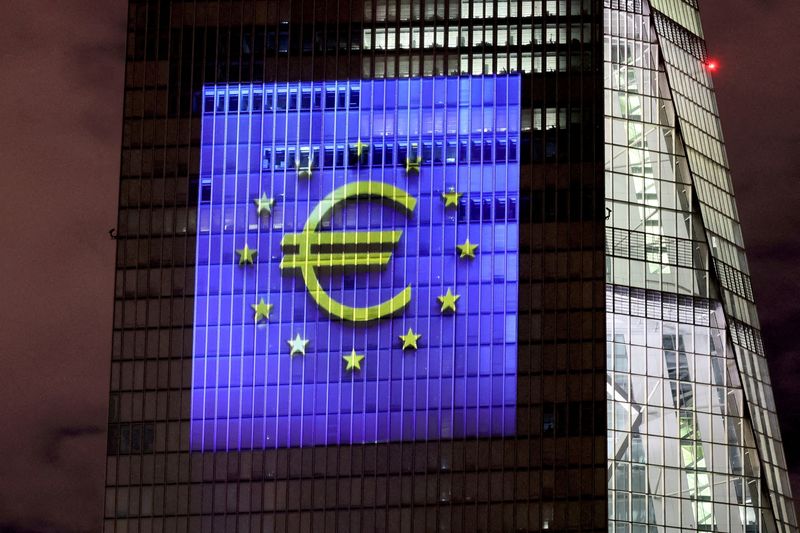Take Five: A world of pain, about to get worse
2022.07.15 11:00

Budrigannews.com – The European Central Bank is late to the rate-hike party but at least it’s on its way, unlike the Bank of Japan. But both banks will find their plans for tackling the inflation versus growth dilemma confronting the world’s central banking elite examined closely.
The news elsewhere could make for more grim reading. PMI indexes, corporate second-quarter earnings and rows over European gas supplies should shed light on how economic growth is shaping up.
Here is your week in markets from Dhara Ranasinghe and Sujata Rao in London, Kevin Buckland in Tokyo and Lewis Krauskopf in New York.
1/ ECB: GETTING THERE
The ECB is about to become one of the last major central banks to join the global rate-hike cycle with a quarter-point move on Thursday that will be its first increase since 2011.
But if a July rate rise to tame record-high inflation is a done deal, the real question is whether a bigger hike is possible in September, given that a Europe-wide gas supply crunch may be about to trigger economic recession.
The ECB will also be pressed on details about a planned “anti-fragmentation” tool to contain bond market stress – something that could be put to the test soon if renewed political turmoil in Italy persists.
And don’t forget the euro’s drop to parity against the dollar – another headache for the ECB given how much a weakening currency exacerbates inflation.
2/ BOJ: NOT YET
The one constant among the world’s biggest central banks – Japan’s unwavering commitment to super-charged policy easing – will be on display again on Thursday.
Governor Haruhiko Kuroda says the economy still needs support, and will pursue that even as the yen tumbles to deeper multi-decade lows, undermined by the widening interest rate divergence with the U.S. Federal Reserve.
For Japanese businesses and consumers, the commodity-driven inflation pain could get worse, with data on Friday expected to show core inflation staying above the BOJ’s target for a third month. But the BOJ may use tepid wage growth as an excuse to stay the stimulus course.
Bets on BOJ capitulation have so far proven premature and thanks to now-daily bond buying stimulus, yields are back under control. But the binge comes at a cost – half of outstanding government bonds are now in central bank hands.
3/ WILL GAS FLOW?
European businesses and governments are anxious to see whether Russia reopens its Nord Stream 1 gas conduit on July 21, after 10 days of annual maintenance.
Supplies via Nord Stream were already cut last month to 40% of capacity, which Moscow blamed on Canada’s failure to return turbine equipment sent there for repairs. The turbine is now being returned but many fear Russia will keep the gas taps off anyway in retaliation for Western sanctions.
European gas prices, up 400% since last July, could rocket higher if Nord Stream stays shut. Plans to replenish storage tanks before winter are in disarray and industrial powerhouse Germany may even be forced to ration fuel.
Gazprom (MCX:GAZP) is not without problems either. The grace period for payments on two international bonds expires on July 19, and if foreign creditors are not paid by then the company will be in default.
4/EARNINGS WARNINGS
S&P 500 companies are forecast to increase annual profits briskly this year but they may struggle to live up to such bullish expectations, given the U.S. economy is cooling and inflation is driving up costs..
Second-quarter earnings are tipped by Refinitiv IBES to rise nearly 6% from the year-earlier period, but JPMorgan (NYSE:JPM) and Morgan Stanley (NYSE:MS) on Thursday got the season off to a sour start. More misses risk driving stock markets even lower.
Goldman Sachs (NYSE:GS), Johnson & Johnson (NYSE:JNJ), Netflix (NASDAQ:NFLX) and Tesla (NASDAQ:TSLA) earnings are among those landing next week. They will report in the shadow of the Fed, which some bet could raise rates by as much as a whole percentage point this month.
5/PMI PAIN
From the United States to Australia, rising interest rates have not yet dampened inflation. How much they are hitting economic activity, ‘flash’ PMI readings will show on July 22.
As of June, Purchasing Managers’ Indexes in the United States and Europe were above 50, implying activity was still expanding. But recent data flow, especially weaker consumer demand, indicates July readings may be softening.
That’s especially so in the euro zone, even though interest rates here are yet to start rising.
China may be the bright spot. Easing COVID-19 lockdowns lifted June PMIs back above 50, and July likely saw manufacturing, shopping and travel crank up another notch.







